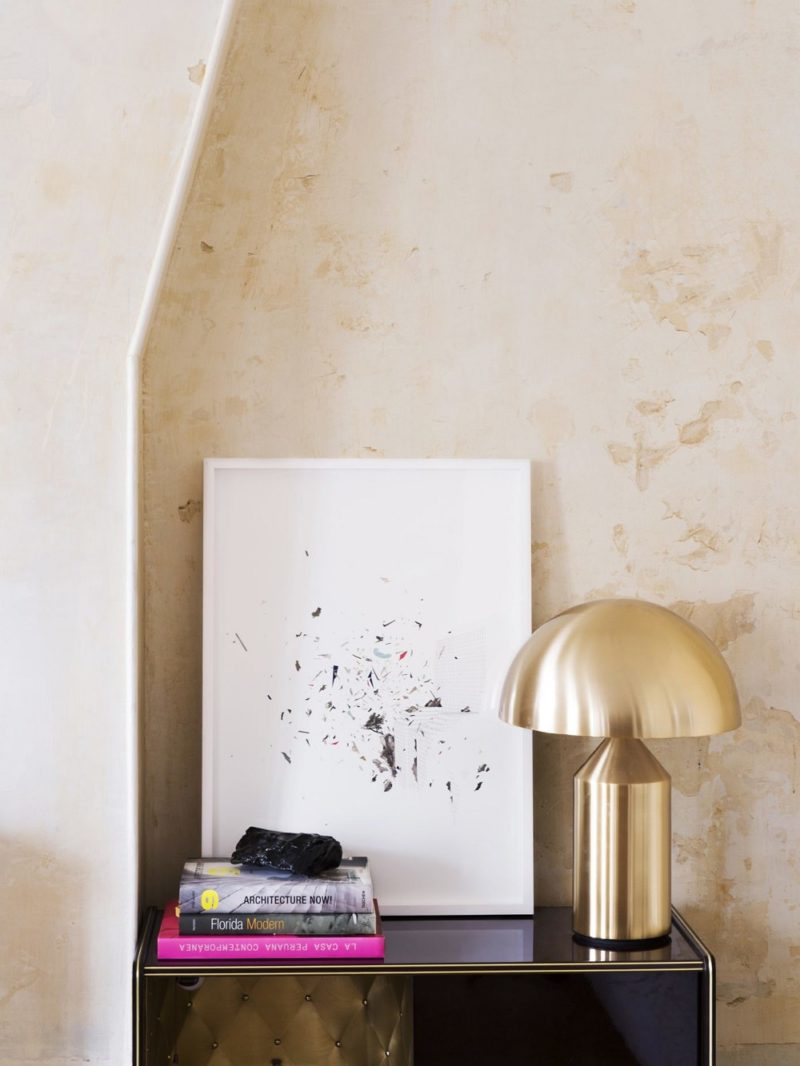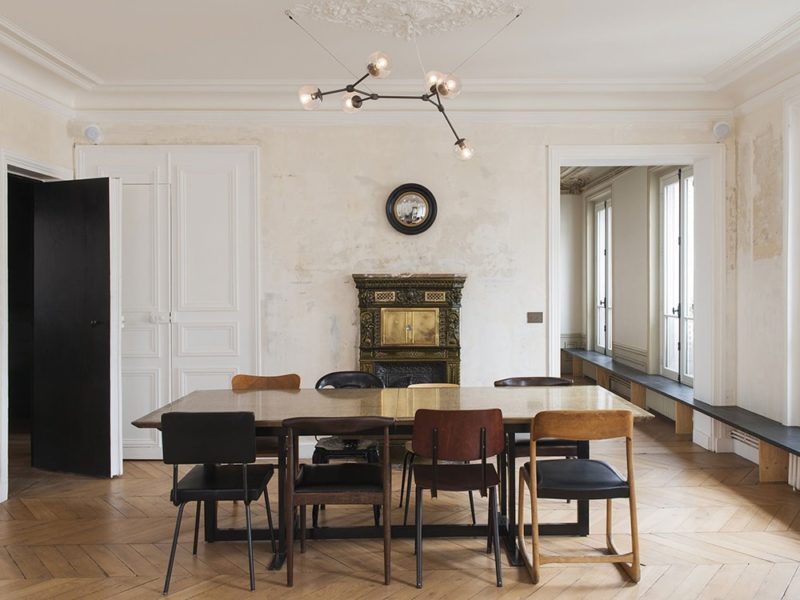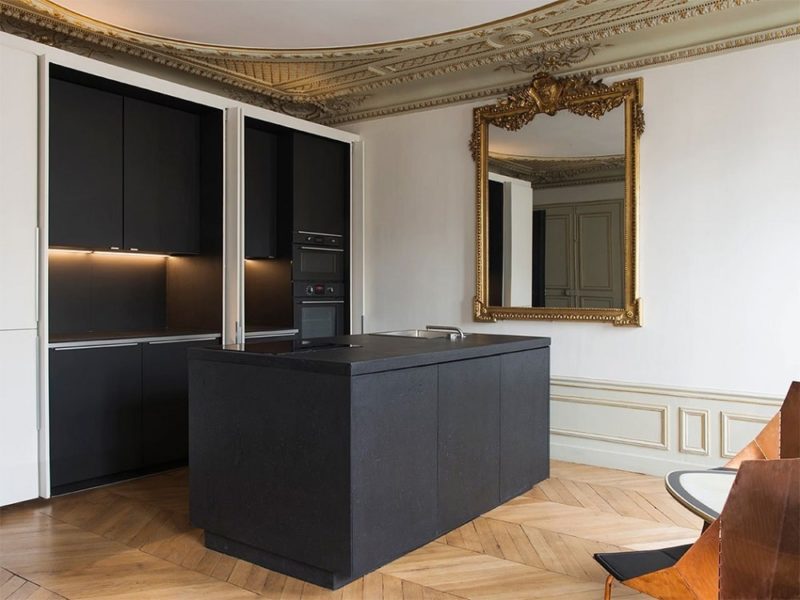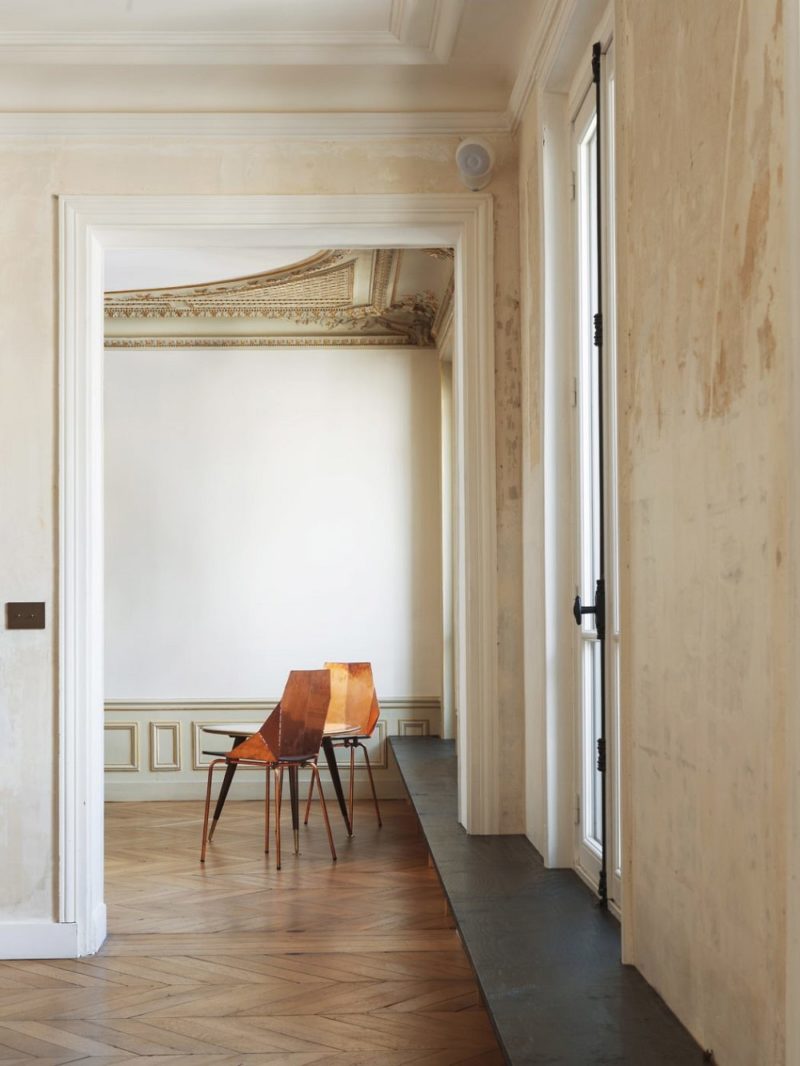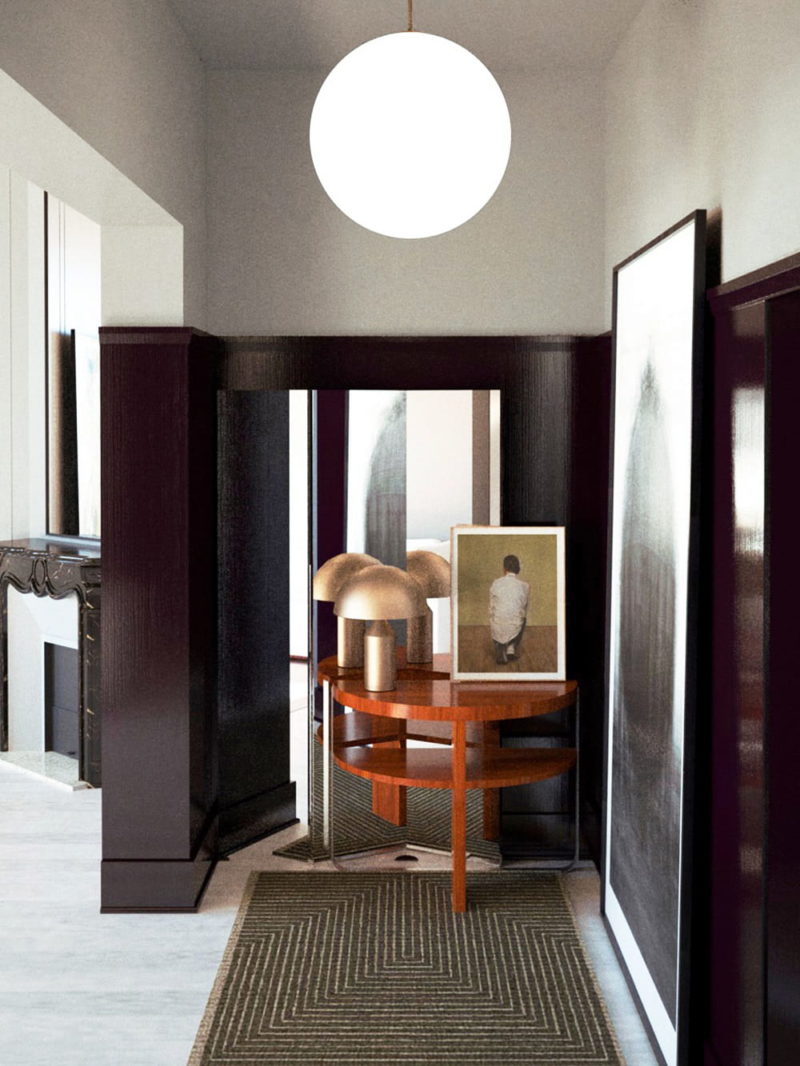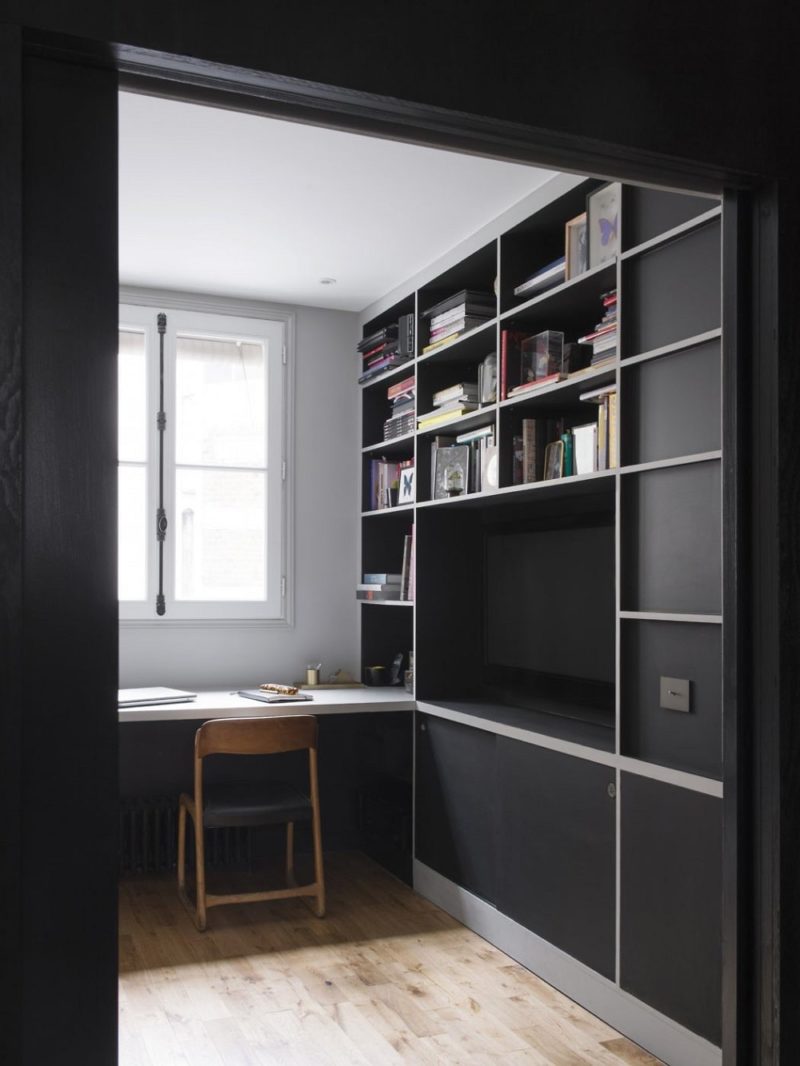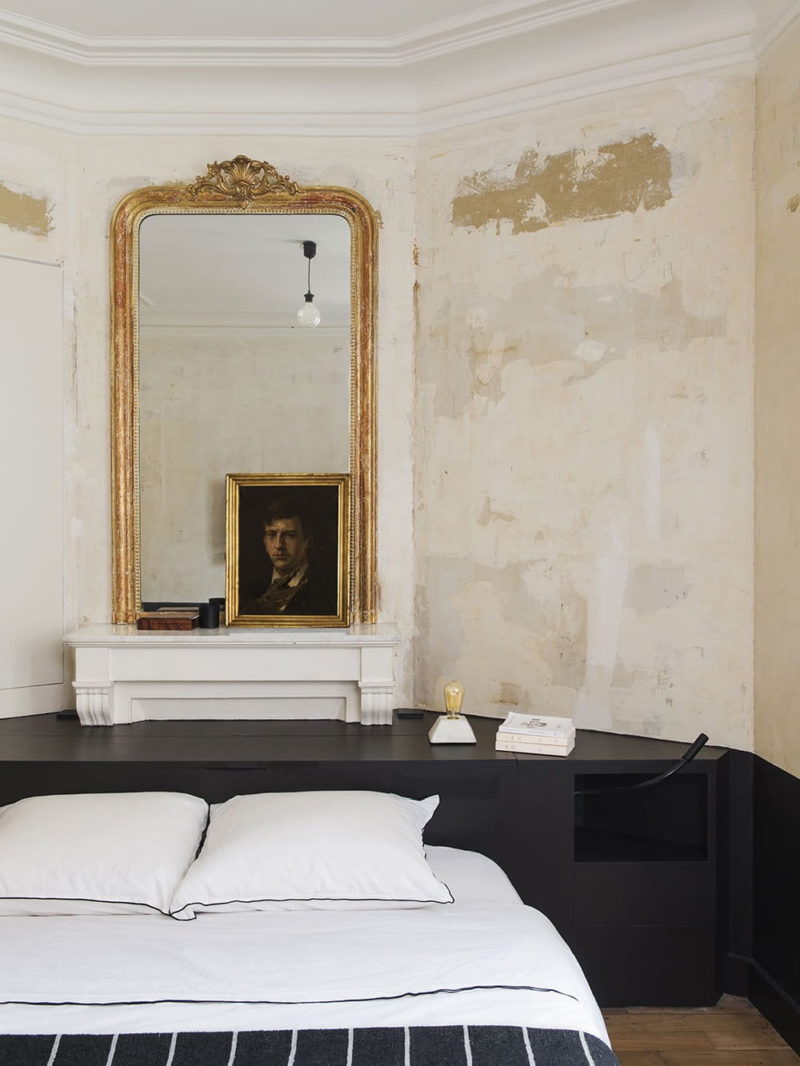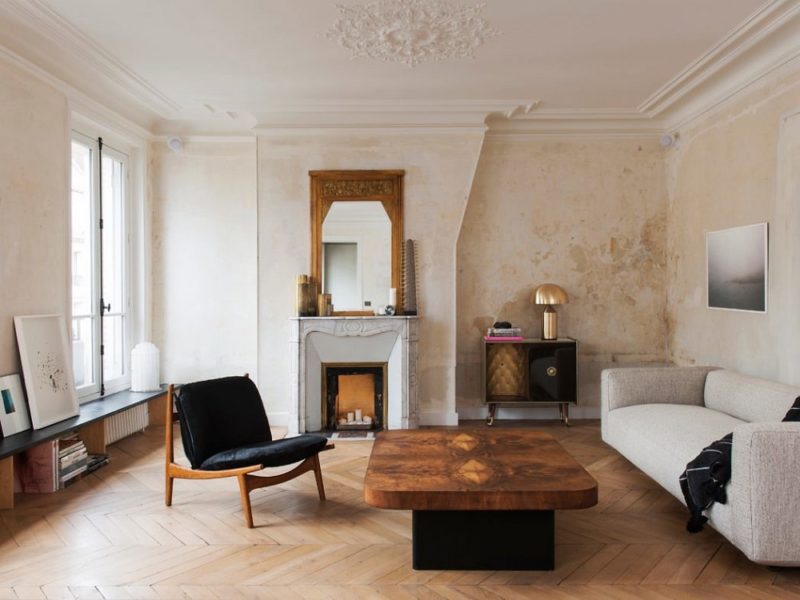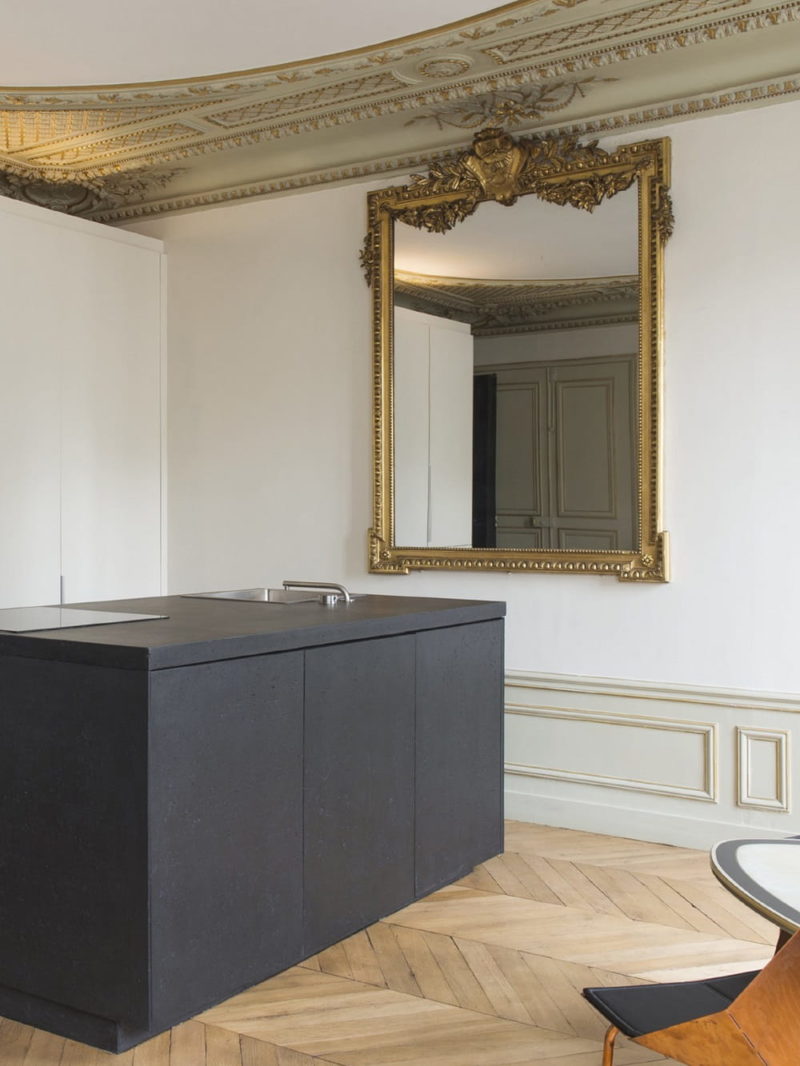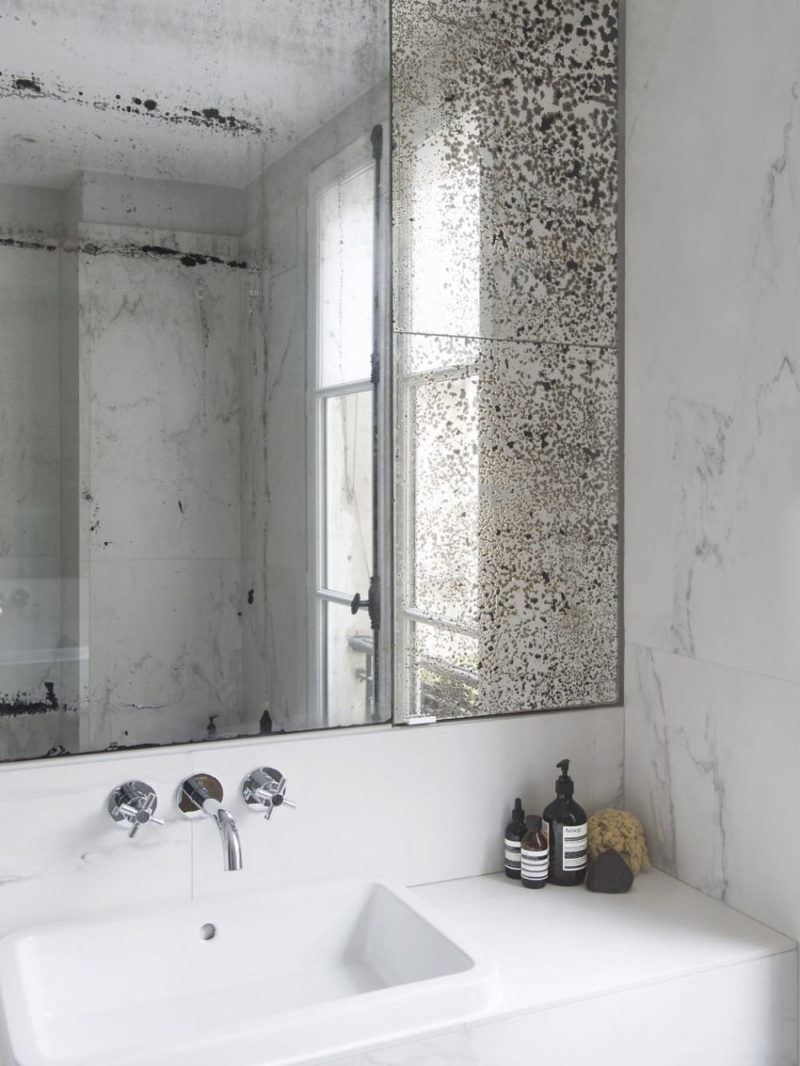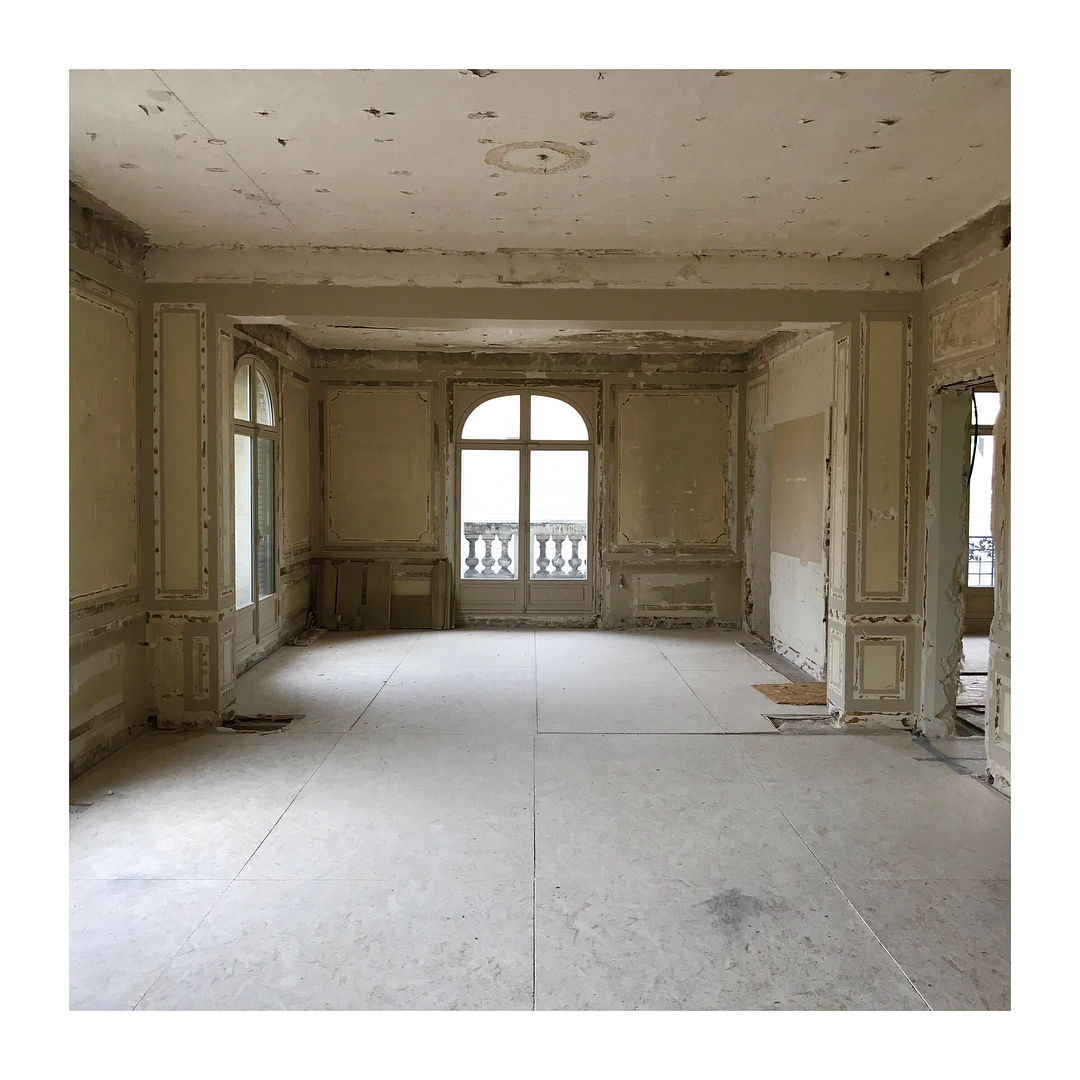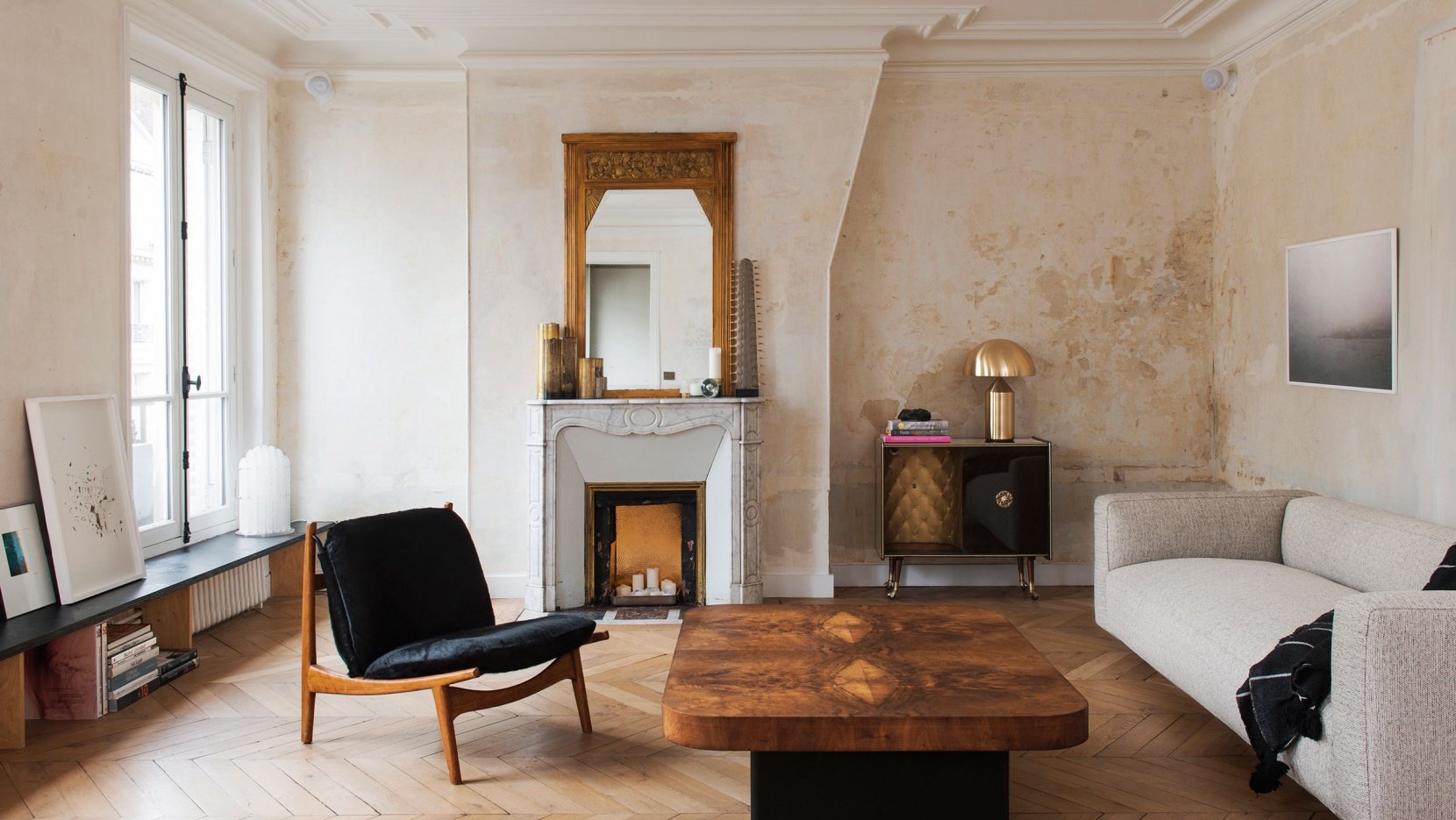
THIS WEEK’S décor inspiration is the Paris apartment of Diego Delgado-Elias, a Peruvian architect who lives in Paris. After ten years working on major hospitality and private projects at large international agencies, Delgado-Elias founded his own agency in Paris in 2014.
Today, we’re catching a glimpse at the architect’s dramatic 150-square-metre Right Bank apartment in the centre of the Xe arrondissement, a space where 19th century ornamentation intermingles with and an urban aesthetic, vintage decorativeness mixes with modern functionality in what has been described as bourgeois Parisian style.
A row of five nearly floor-to-ceiling windows span across the façade side of the space, flooding it with light and wonderful views of the world outside. The patina of the old walls was kept in some areas, leaving weathered patterns of discolourations and traces of history, as with other preserved decorative elements such as the gilded wainscoting, ornate ceiling medallions and cornices, original mirrors and crown moulding, the marble and faïence mantelpieces (one of which dates back to the 18th century) and the original chevron-patterned parquet flooring. An eclectic selection of mid-century and Art Deco pieces add an air of vintage modernity.
Black, a signature feature of the architect’s style, runs through the apartment, from the a black wooden shelf that runs across the façade wall beneath the large windows 45 centimetres above the floor, to the doorframes, which are covered with black woodwork. The kitchen’s central island, a monolith of black concrete, contrasts against the room’s antique wood flooring. In the dining room, mismatched vintage dining chairs that Delgado-Elias found at a flea market, are arranged around an Art Deco dining table. In the bedroom, a black wooden built-in fits into the marble fireplace and serves as a headboard, continuing as black wainscoting that runs along the bedroom walls.
This Parisian apartment, both modern and masculine, is suspended between ornamentation and minimalism in ornate austerity, caught somewhere between pragmatism and poetry.
